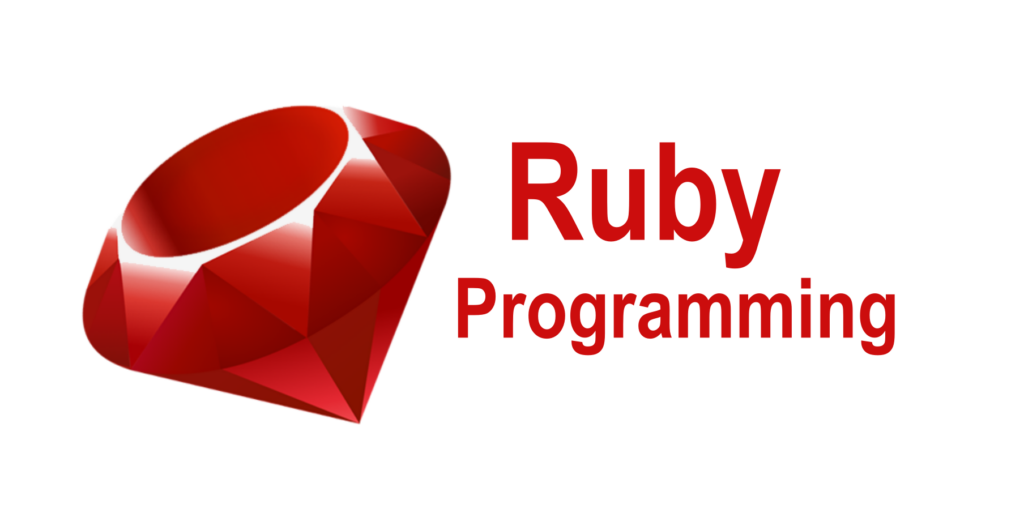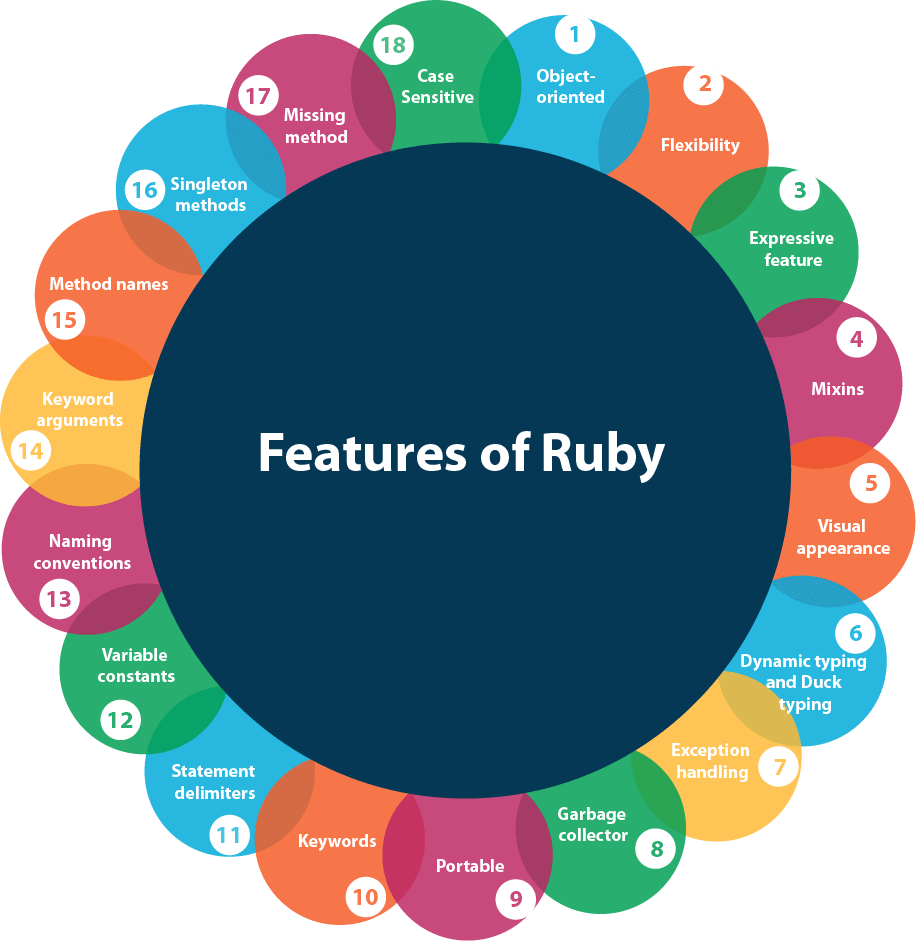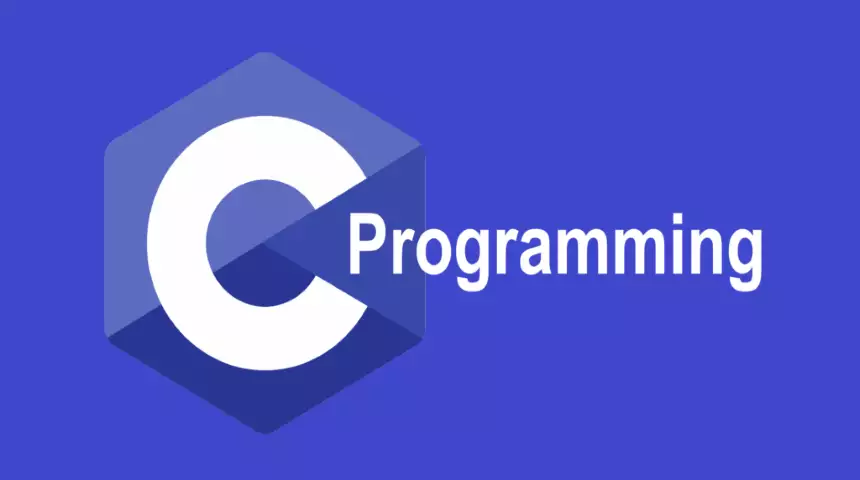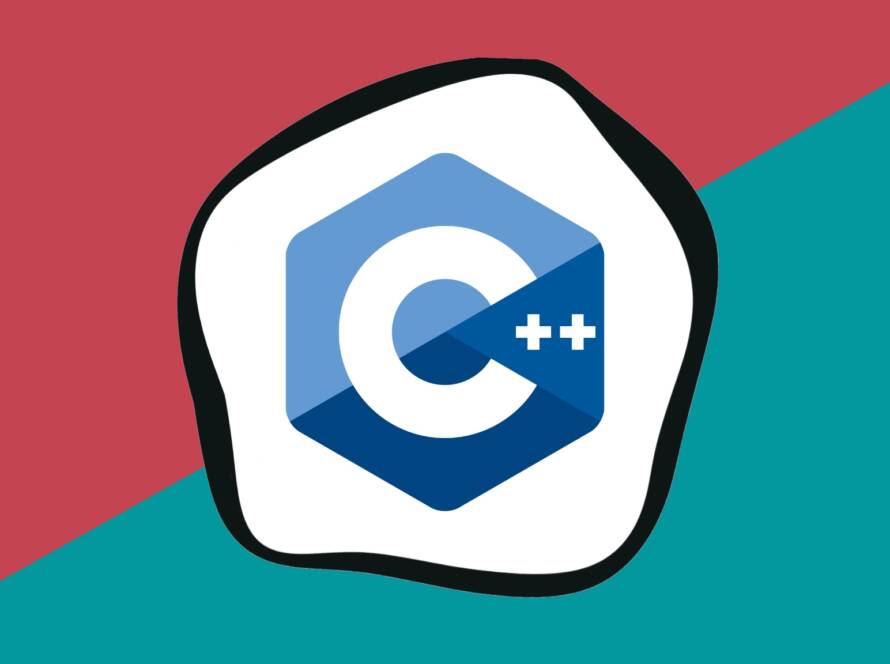Table of Contents

Introduction
Ruby is a dynamic, object-oriented programming language that has become one of the most popular choices for web development in recent years. Its popularity has skyrocketed due to its simplicity, elegance, and versatility. Ruby on Rails, a popular framework built on top of this, makes it easier for developers to build robust, high-performance web applications. In this comprehensive guide, we’ll take a closer look at what makes this such a special programming language and why so many developers choose it for their projects.
History
This was created in the mid-1990s by Yukihiro “Matz” Matsumoto, a programmer in Japan. Matsumoto wanted to create a language that combined the simplicity and ease of use of scripting languages like Python and Perl with the power and functionality of object-oriented languages like C++ and Java. The result was Ruby, a language that has since become beloved by developers around the world.
It is a popular, high-level programming language used by developers around the world. It is known for its simplicity, elegance, and versatility. But, how did it’s come to be? In this article, we’ll delve into the history of this and how it evolved into the language it is today.
- The Origin of Ruby
It was created in the mid-1990s by Yukihiro “Matz” Matsumoto, a programmer in Japan. Matz was influenced by several programming languages, including Perl, Python, and Smalltalk. He wanted to create a language that combined the best features of these languages and was easy to read and write.
The first version of this was released in 1995, and it quickly gained popularity in Japan. The language was designed to be a scripting language, making it easy for developers to quickly write small scripts to automate tasks.
- Ruby Gains International Recognition
In the early 2000s, Ruby started to gain recognition outside of Japan. This was largely due to the release of the this on Rails framework, which was created by David Heinemeier Hansson in 2005. Rails made it easier for developers to build web applications using this, and it quickly became one of the most popular web development frameworks in the world.
Ruby on Rails has been used to build many popular websites, including Airbnb, GitHub, and Shopify. Its popularity has helped to increase the popularity of this as a whole, and today this is used by developers around the world to build a wide variety of applications, from web applications to desktop software and mobile apps.
- Ruby 2.0 and Beyond
In 2013, Ruby 2.0 was released. This version of Ruby included a number of new features, including improved performance and support for multiple languages. Ruby 2.0 also introduced a new syntax that made the language even more readable and accessible to developers.
Today, Ruby continues to evolve and improve. The latest version, Ruby 3.0, was released in December 2020 and includes a number of new features, including improved performance and support for concurrency.
Ruby’s Syntax
Ruby is known for its concise, readable syntax, which makes it a pleasure to work with. The language uses a minimalist approach to syntax, so even a beginner can quickly pick up the basics. For example, here’s a simple it’s program that prints “Hello, World!” to the screen:
puts "Hello, World!"Object-Oriented Programming
Ruby is an object-oriented language, which means that everything in the language is treated as an object. This makes it easy to structure and organize code, and it also enables developers to take advantage of inheritance and polymorphism, two powerful concepts in object-oriented programming. For example, here’s a simple it’s class that represents a dog:
class Dog
def initialize(name, breed)
@name = name
@breed = breed
end
def bark
puts "#{@name} barks!"
end
end
dog = Dog.new("Fido", "Labrador")
dog.bark # Outputs "Fido barks!"
Ruby on Rails
Ruby on Rails, also known as simply “Rails,” is a popular web development framework built on top of this. It provides developers with a set of tools and conventions that make it easier to build high-quality web applications quickly and efficiently. One of the key benefits of Rails is its focus on convention over configuration, which means that developers can focus on writing code, rather than spending time on tedious configuration tasks.
For example, here’s some code that demonstrates how to create a simple blog application using Rails:
# Generate a new Rails application
rails new blog
# Navigate to the new application's directory
cd blog
# Generate a model for the blog post
rails generate model Post title:string body:text
# Generate a controller for the blog
rails generate controller Posts
# Add the following code to the controller to define the index action
class PostsController < ApplicationController
def index
@posts = Post.all
end
end
# Add the following code
Benefits
Ruby is a great choice for developers looking to build web applications. In this article, we’ll explore some of the key benefits of using it for web development.
Easy to Learn and Use
One of the biggest benefits of Ruby is that it is easy to learn and use. The language has a simple, straightforward syntax that makes it easy for developers to write code quickly. This means that even if you’re new to programming, you can start using Ruby to build web applications in a matter of hours.
Ruby also has a large and active community of developers, which means that there are plenty of resources available to help you learn the language. Whether you’re looking for tutorials, online courses, or forums, you’ll find a wealth of information and support to help you get started with Ruby.
Highly Productive
Ruby is a highly productive language, which means that you can build web applications quickly and efficiently. This is due in part to the language’s simple syntax, but it’s also thanks to the many powerful libraries and frameworks that are available for Ruby. For example, Ruby on Rails is a popular framework for building web applications in Ruby that makes it easy to add features such as authentication, authorization, and database connectivity to your application.
Scalable and Flexible
Ruby is a scalable and flexible language, which makes it a great choice for web applications of all sizes. Whether you’re building a small, personal project or a large, enterprise-level application, it has the tools and features you need to get the job done.
Ruby is also highly flexible, which means that you can use it to build a wide variety of applications, from simple, static websites to complex, dynamic web applications. The language’s object-oriented nature makes it easy to build applications that are modular and scalable, so you can add new features and functionality as your application grows.
Great Support and Community
Ruby has a large and active community of developers, which means that there is plenty of support available when you need it. Whether you’re looking for help with a specific problem, or just want to learn more about the language, you’ll find a wealth of information and support online.
In addition, there are many companies and organizations that specialize in this development, which means that you can find experts who can help you build your web application. Whether you need help with a specific feature, or just want to get advice on the best tools and frameworks to use, you’ll find experts who are ready to help.
Features

Ruby also has a large and active community of developers, which means that there are plenty of resources available to help you learn the language. Whether you’re looking for tutorials, online courses, or forums, you’ll find a wealth of information and support to help you get started with It.
Object-Oriented
Ruby is an object-oriented programming language, which means that everything in Ruby is treated as an object. This makes it easy to create complex data structures and to write code that is clean, reusable, and easy to maintain.
Dynamic Typing
This uses dynamic typing, which means that you don’t have to declare the type of a variable before you use it. This makes it easy to write code quickly and to make changes to your code as your application evolves.
Metaprogramming
Ruby has powerful metaprogramming capabilities, which allow you to write code that writes code. This means that you can create custom methods, classes, and modules on the fly, which can make your code more efficient and flexible.
Interactive Shell
Ruby comes with an interactive shell, which makes it easy to test and debug your code. You can enter Ruby code directly into the shell, and see the results immediately, which makes it a great tool for learning and for exploring new ideas.
Large Standard Library
It has a large standard library, which means that you have access to a wide range of tools and libraries to help you build your application. Whether you need to connect to a database, process XML files, or generate reports, you’ll find the tools you need in the Ruby standard library.
Great Support and Community
It has a large and active community of developers, which means that there is plenty of support available when you need it. Whether you’re looking for help with a specific problem, or just want to learn more about the language, you’ll find a wealth of information and support online.
In addition, there are many companies and organizations that specialize in Ruby development, which means that you can find experts who can help you build your application. Whether you need help with a specific feature, or just want to get advice on the best tools and frameworks to use, you’ll find experts who are ready to help.
Conclusion
Ruby is a great choice for web development, offering developers a combination of simplicity, elegance, and versatility. Whether you’re a seasoned programmer or just starting out, this is a great language to learn and use. With its easy-to-learn syntax, powerful libraries and frameworks, and active community of developers, it is a great choice for your next web development project.


